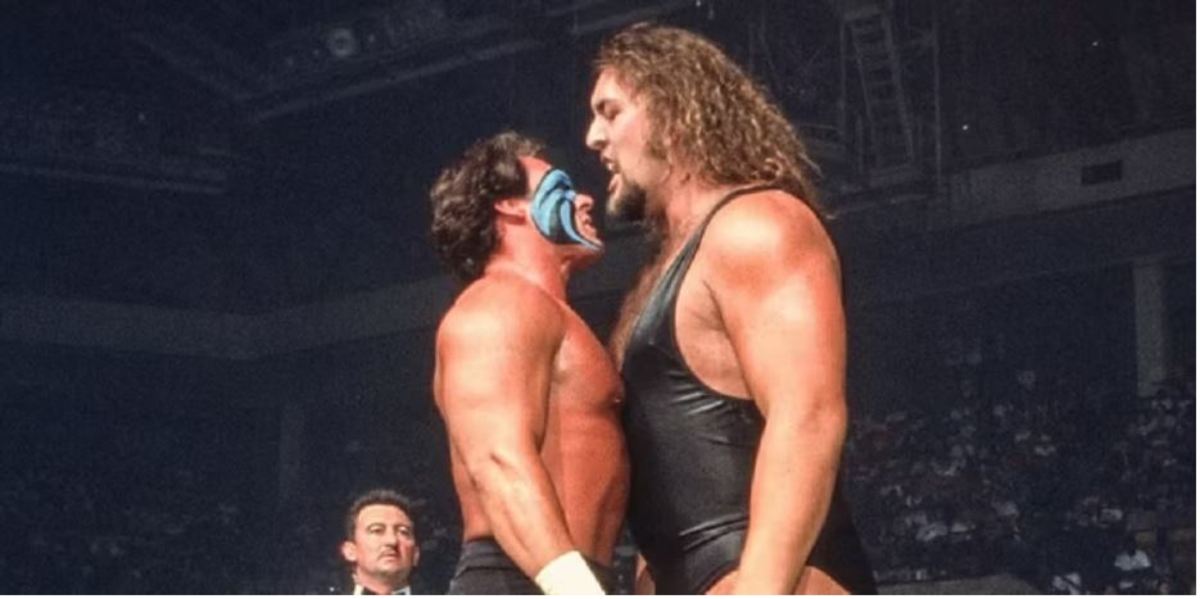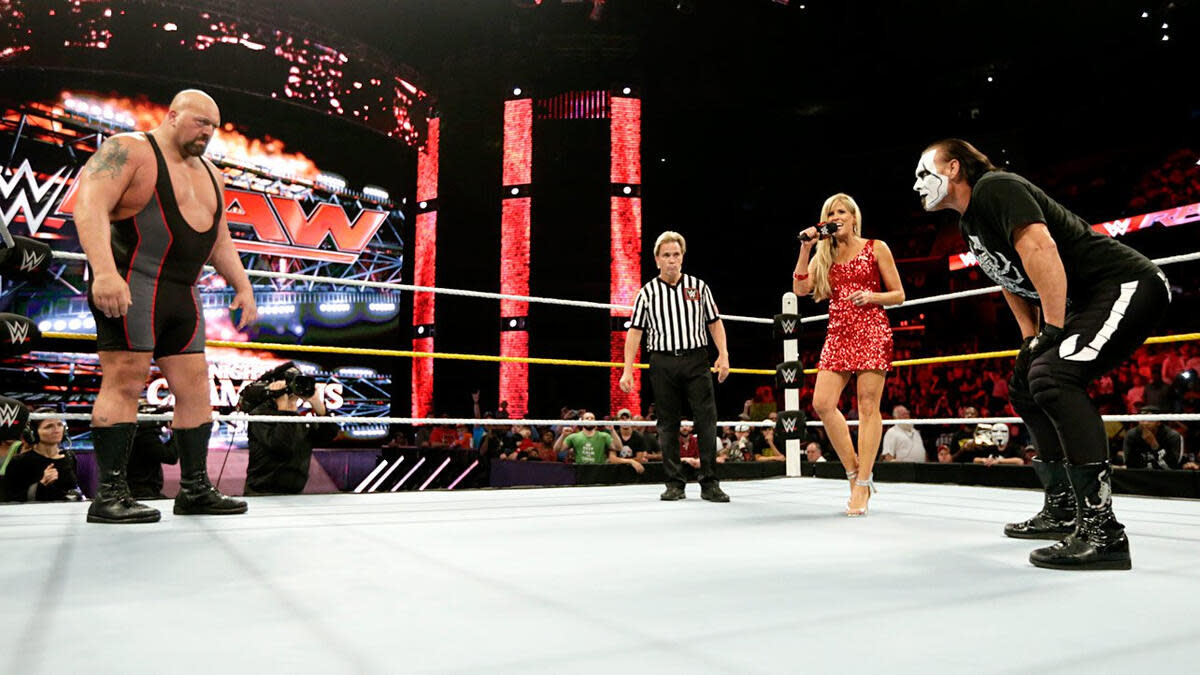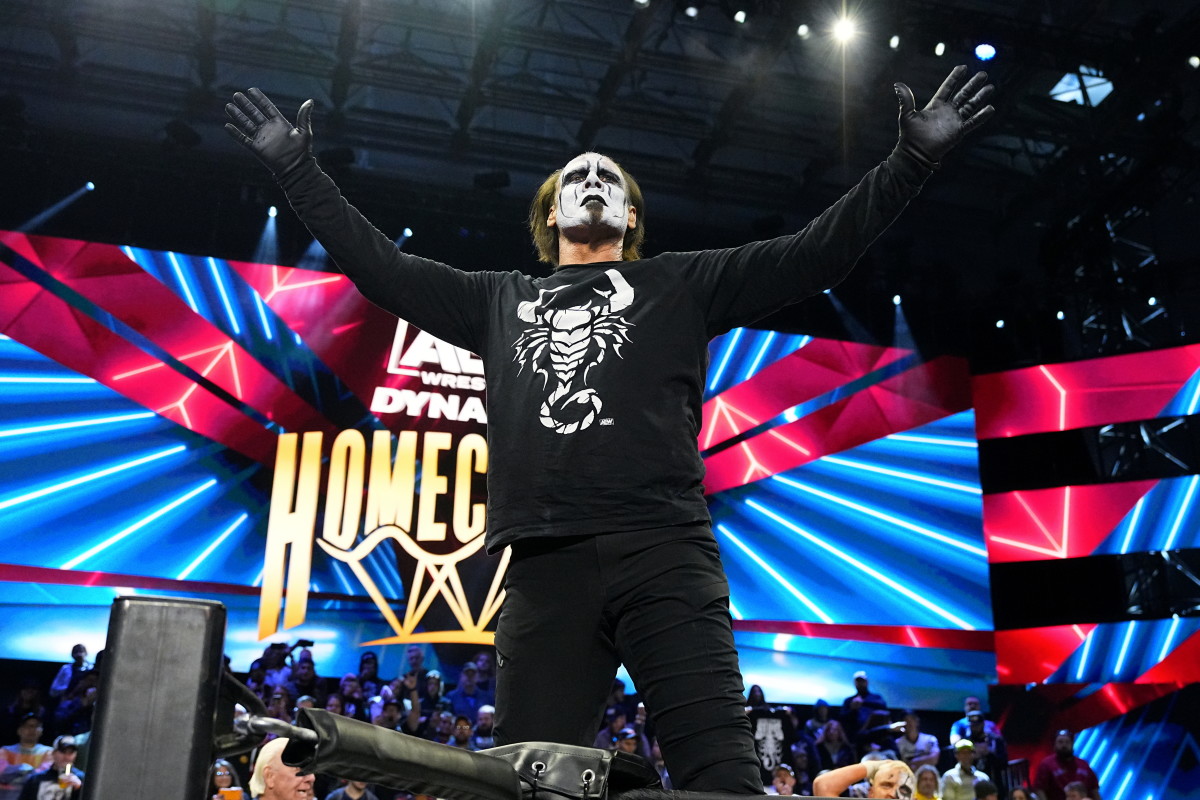Paul Wight Privy to Sting’s Greatness Since World Championship Wrestling

In 1995, in an era before cell phones or social media, Paul Wight sat backstage at a WCW event playing chess with Steve Borden.
With no singlet for The Giant, and no face paint for Sting, the two traded moves on the chess board as they later would in the wrestling ring. Only 23 years old at the time, the only aspect larger than Wight’s gargantuan size was his youthful exuberance.
As he waited for Sting to make his next move, Wight was startled when he heard a familiar commotion. A fight was breaking out–the infamous one between “Mr. Wonderful” Paul Orndorff and Vader–and Wight was eager to get a closer view.
“As I was getting up, Sting said to me, ‘Nothing good will come from that,’” said Wight. “I said, ‘What? I want to see what’s happening.’ And he said, ‘That’s their business.’ So we stayed there and finished the game.”
Despite wearing sandals on his feet, Orndorff won the fight. Vader left the company and moved on to a run that never quite lived up to expectations in WWE. And Sting won the chess match.
Wight, however, learned an incredibly valuable lesson.
“I learned early on that I couldn’t beat him in chess,” said Wight, his laugh booming. “I learned something a lot deeper than that, too. I still remember how I wanted to jump right into the chaos. But he was right–it was between Orndorff and Vader. I didn’t have any business getting involved in it.”
Sting wrestles the final match of his career this Sunday at AEW’s Revolution pay-per-view. At 64, he has defied the odds by crafting a career that extended across five different decades. After a neck injury sustained in WWE appeared to put an end to his wrestling days in 2015, he has miraculously rewritten his final chapter, in the most fitting fashion, in AEW.
The former franchise player for WCW, Sting will be fondly recalled for his work outside of WWE. Though there were some highlights while there–primarily wrestling at WrestleMania 31, the superb match with Rollins that became even more tense with his injury, and the one night nine years ago when he wrestled two matches (both of which included Wight) on Raw–Sting will forever be remembered as the face of the challenger brand in WCW, TNA, and now AEW.
“We met in December of ’94,” said Wight. “Before I’d even signed with WCW, I got invited to a show in Chicago and we met there. He was extremely humble and gracious.
“Throughout my career, I’ve seen stars, guys who thought they were stars, guys who made money, and guys who didn’t. Sting was everything you could ask for. He was this incredible babyface. As far as the locker room goes, Sting never had heat with anyone. There were all these different camps in WCW, but Sting got along with everybody. And you could always tell he cared about the fans. That’s why he still connects with people. It’s very genuine.”
In May of 1996, Wight headlined WCW’s Slamboree pay-per-view against Sting. This was only days before Scott Hall arrived and forever changed the wrestling landscape. The match at Slamboree was pivotal to Wight’s ascent as The Giant. Only seven months into his career, and already wearing the world title and working the main event, Wight was in desperate need of guidance from a top star.
Fortunately for him, there was Sting.

“A lot of guys early in my career didn’t know how to work with me,” said Wight. “And I was green as grass. I started in October of ’95 and this was May of ’96, so I’m totally dependent on Sting. He understood how to wrestle a giant–he loved the story of chopping down a tree, this old-school story that goes back to Andre.”
Sting would get The Giant rocking, then drop him to one knee. He’d hit all four corners of the ring, weakening the base and doing everything he possibly could in an attempt to knock The Giant off my feet.
As all of that was unfolding, Wight started to process what was happening.
“I used to think wrestling was so hard,” said Wight. “It’s not when you know your character and know your opponent. Sting is a master at that.
“My role was to be the monster that the knight needed to slay. Sting knew that the more he fought from underneath, the better the story would be. He had great timing and patience, which let the crowd really get behind him–then he fed off that energy. He had a way of showing that, the more you cheered for him, the stronger he would be.”

Wight, 52, still wrestles for AEW. His most recent match was last November on Dynamite during the Sega-sponsored street fight. His night ended when Powerhouse Hobbs slammed him onto the hood of a car, wrecking Wight and making Hobbs look like the most destructive force in all of pro wrestling.
“Somebody has to cook and somebody has to eat, and Sting taught me that core philosophy,” said Wight. “I learned that my first job in a match is to get my opponent over, then get the match over. That’s Point A and Point B. If you do that right, you’ll automatically get yourself over. That’s not, ‘You do your stuff, I’ll do my stuff.’
“It’s bigger than you. Some guys only take care of themselves, and good for them. But the guys I respect most are the ones who make people better in the ring. That’s someone like Ric Flair, he has to be mentioned. So does Sting. I couldn’t have asked for a better influence early in my career.”
When Sting and Darby Allin wrestle their tornado tag team title match against the Young Bucks on Sunday in Greensboro, North Carolina at the Greensboro Coliseum–the same Greensboro Coliseum where Sting wrestled Ric Flair in March of 1988 at the very first Clash of the Champions–there will be no shortage of adults in tears.
Sting was part of people’s childhood. People watched him wrestle in the parlor of their grandmother’s house all those years ago. While the excitement of the Monday Night Wars has faded, the memories of Sting battling the NWO are no less epic.

In his face paint and gear, Sting appears impervious to the aging process. That, however, is not the case, and he is bidding adieu to the craft that made him an international star.
But there is at least one positive to his retirement.
“I can’t beat him at gin,” said Wight. “Now that he’s retiring, I won’t have to write him a 1099 for how much money I’ve given him over the years.”
On a more serious note, Wight detailed how there will never be another quite like Sting.
“Sting made towns for WCW and became a household name,” said Wight. “If you booked Sting in Tupelo, Mississippi on a Saturday night, Sting would show up and do it. He put in the work and became their franchise guy. He became a legend in Japan, too. He’s now an incredible asset for AEW. Sting is a guy who understood what it is like to work against guys who were really good, but the wrestling world didn’t know them yet. He did that for Crockett Promotions, WCW, TNA, and now again in AEW.
“Sting’s the guy that always understood what this is about. Whether he was getting his shoulders pinned, or getting his arm raised, he made sure the crowd enjoyed the hell out of a match. He never got involved in the locker room drama. When there were problems, he worked through them. For him, this was never about ego.
“I wouldn’t be where I am without him, and wrestling wouldn’t be where it is, either.”
